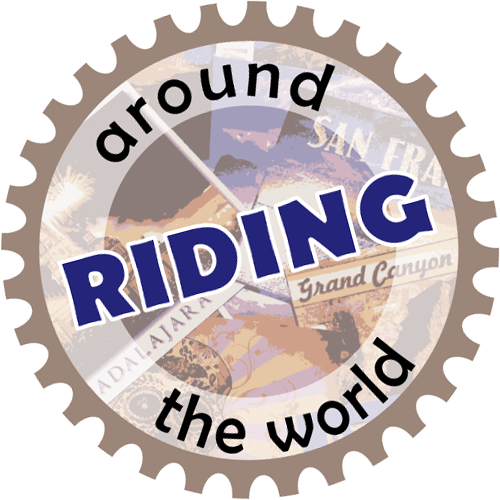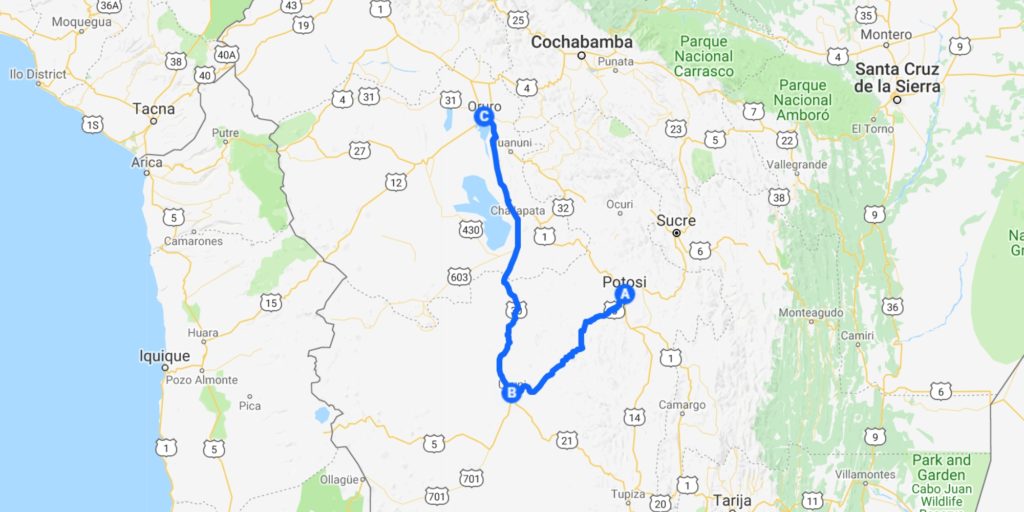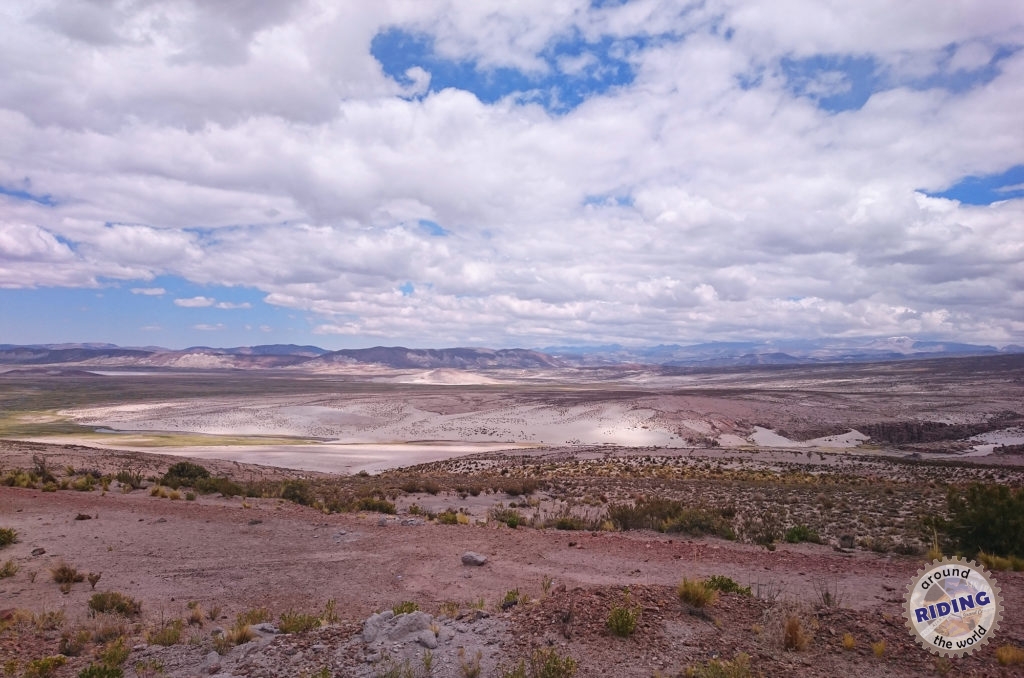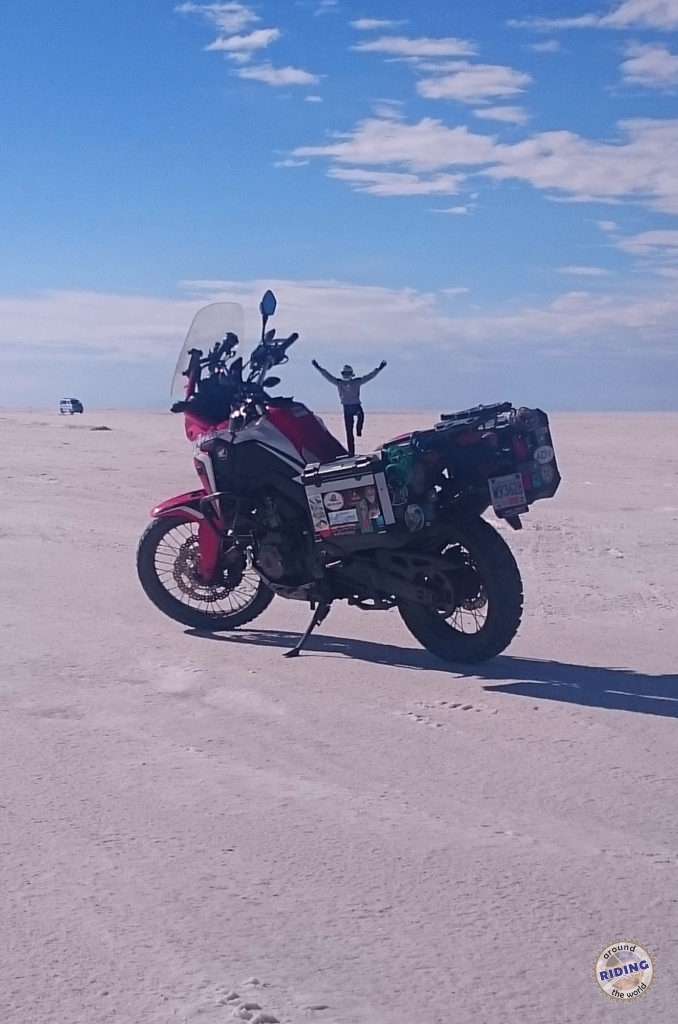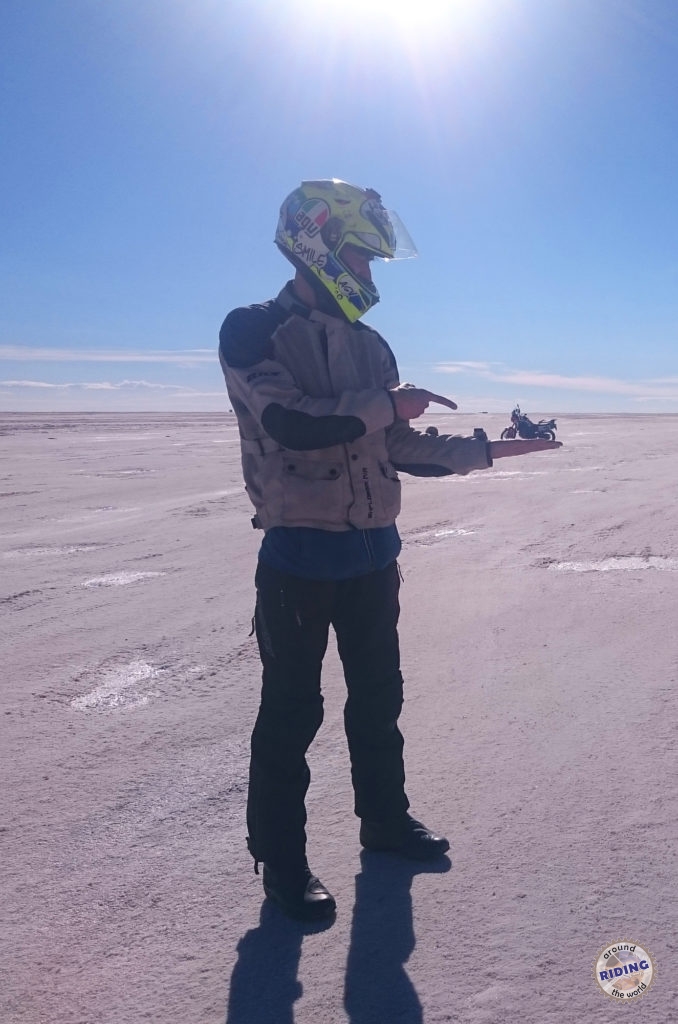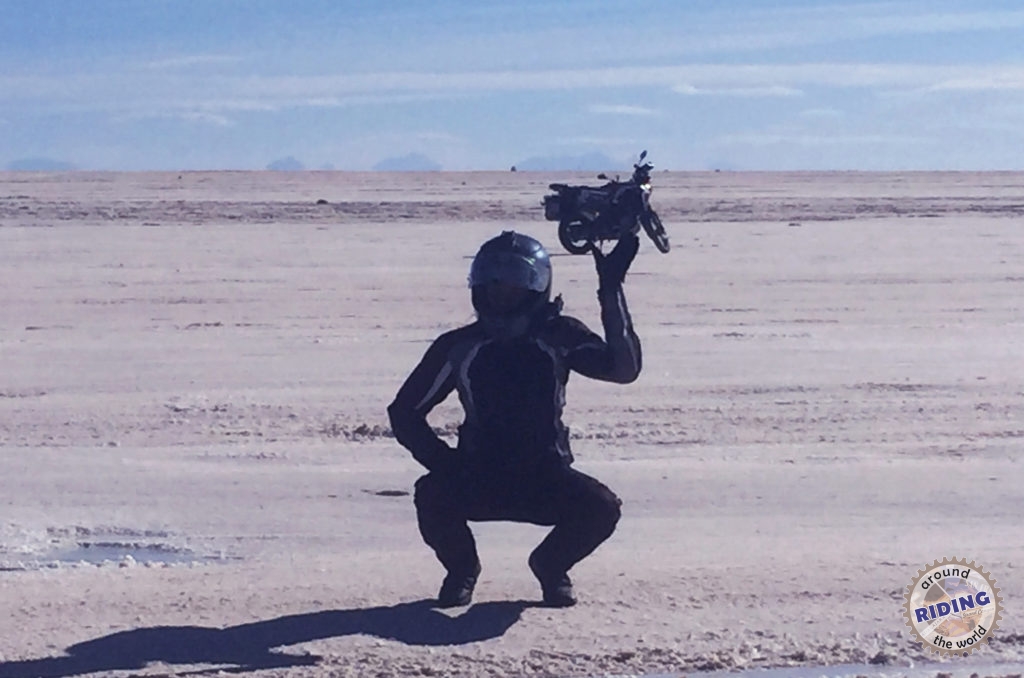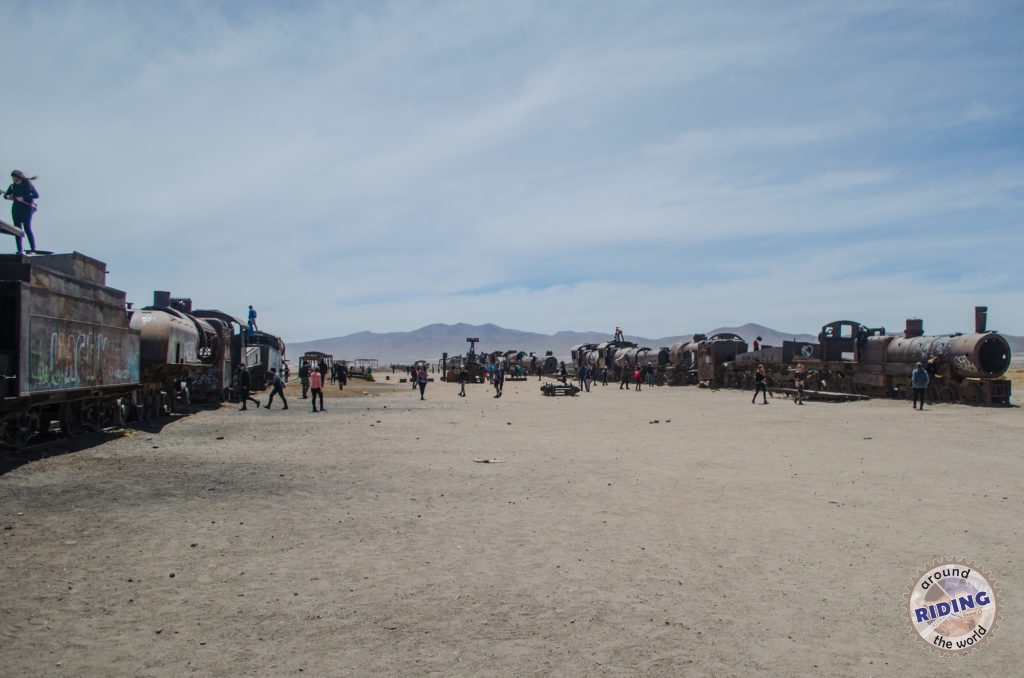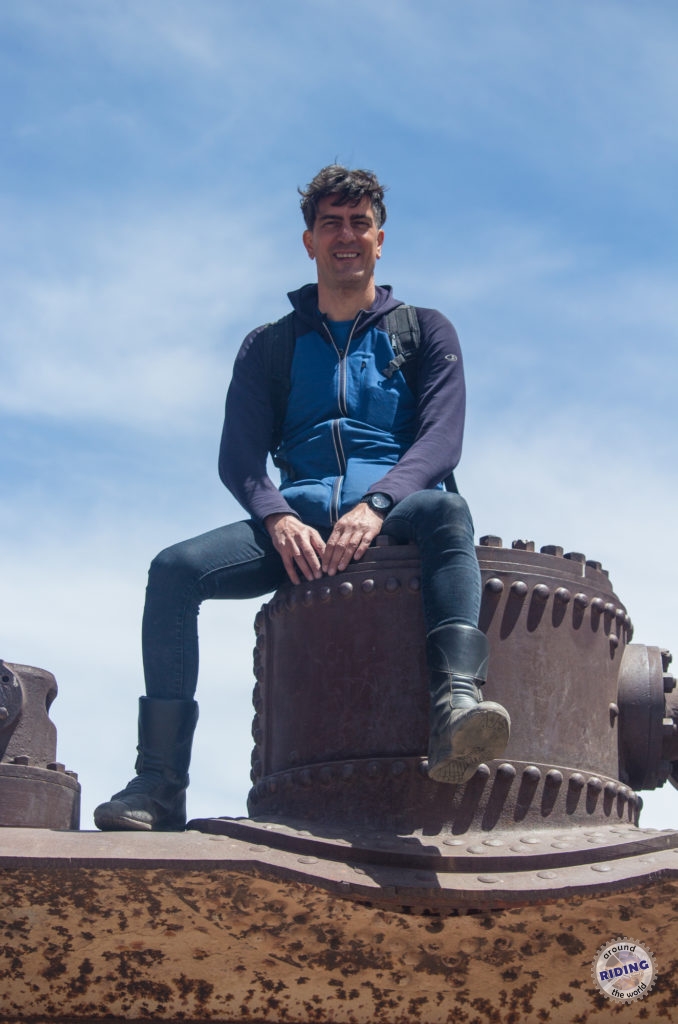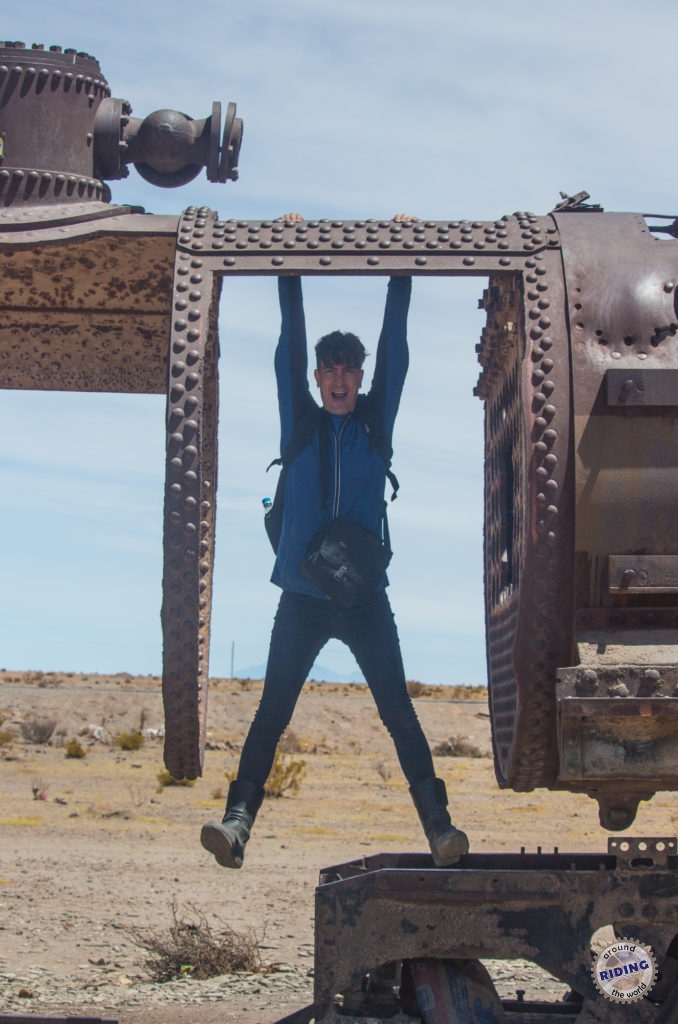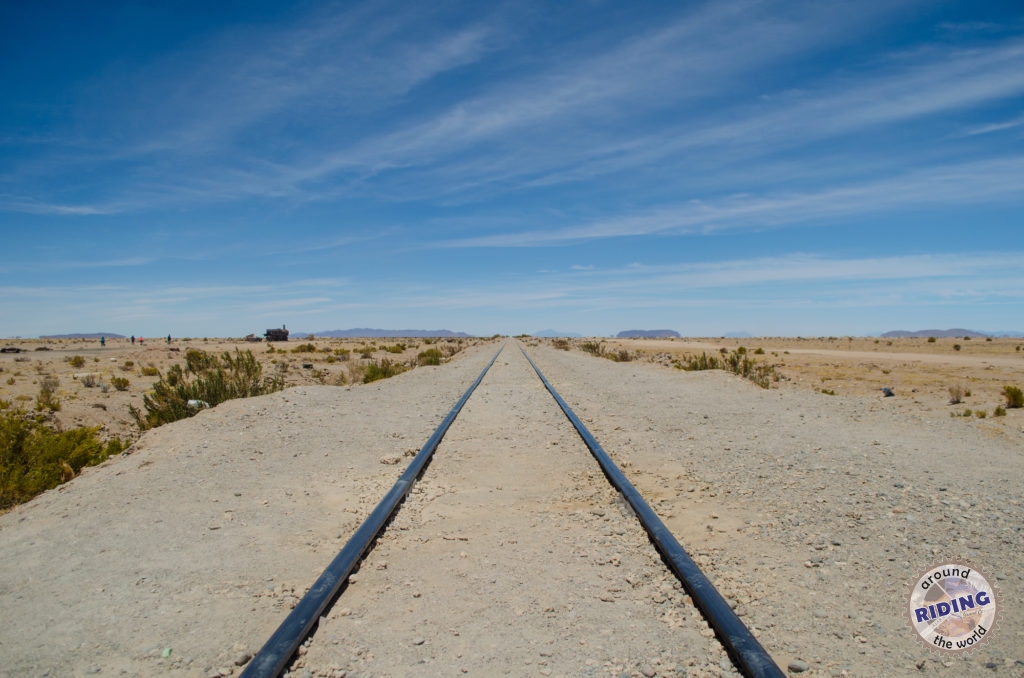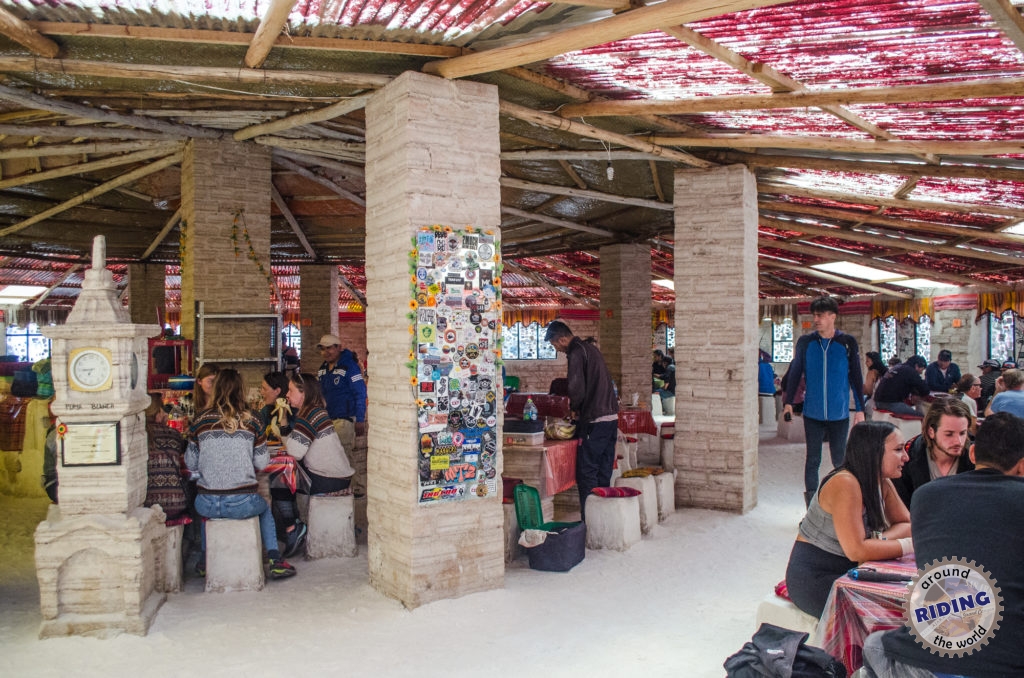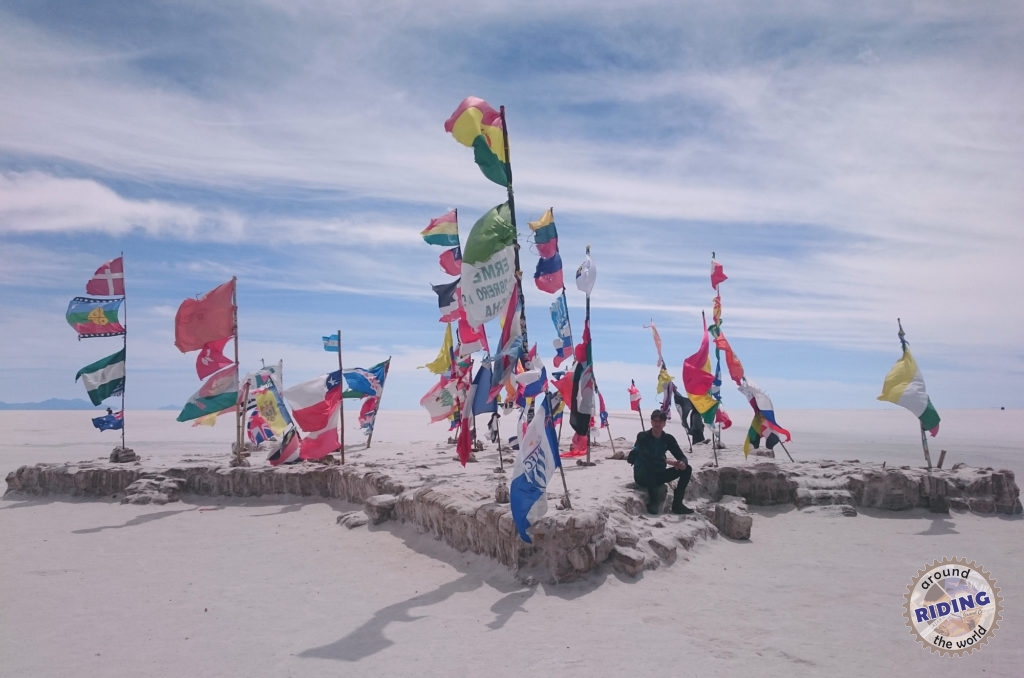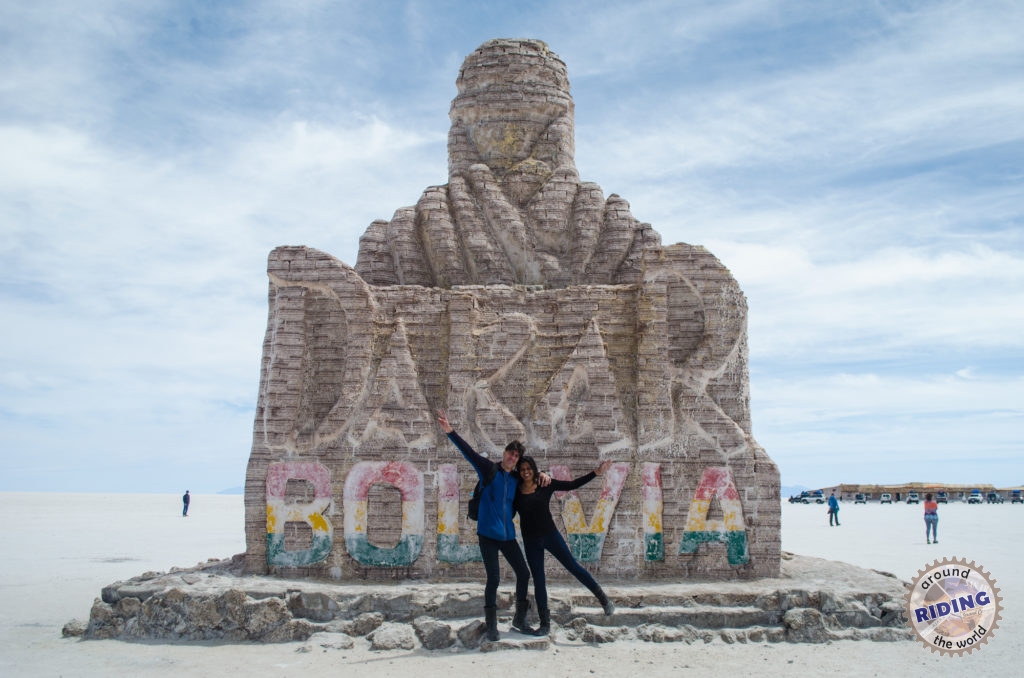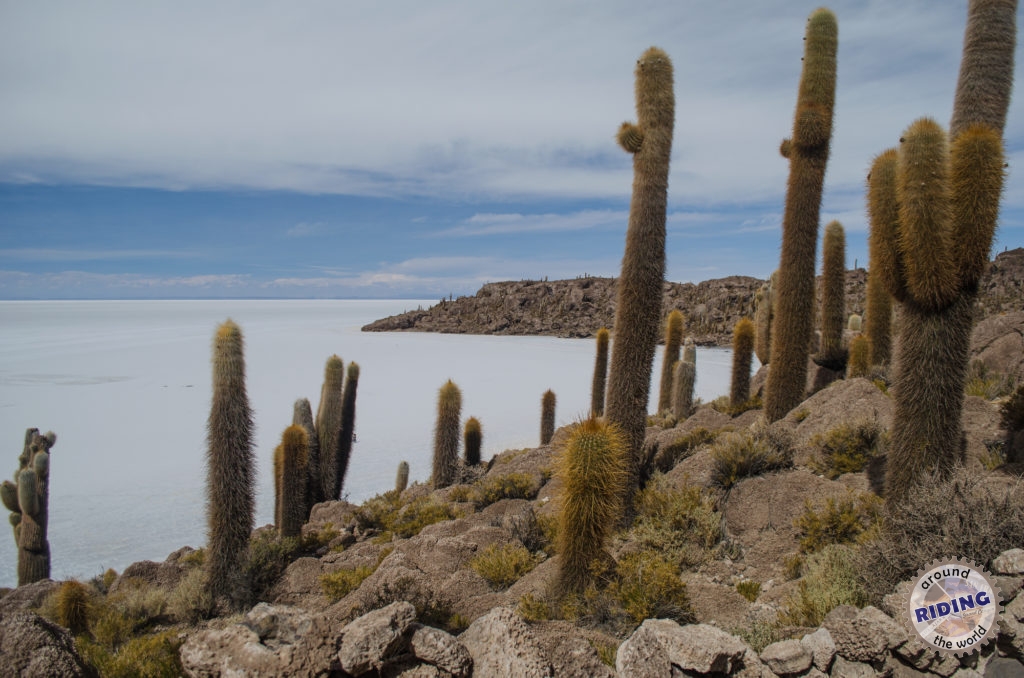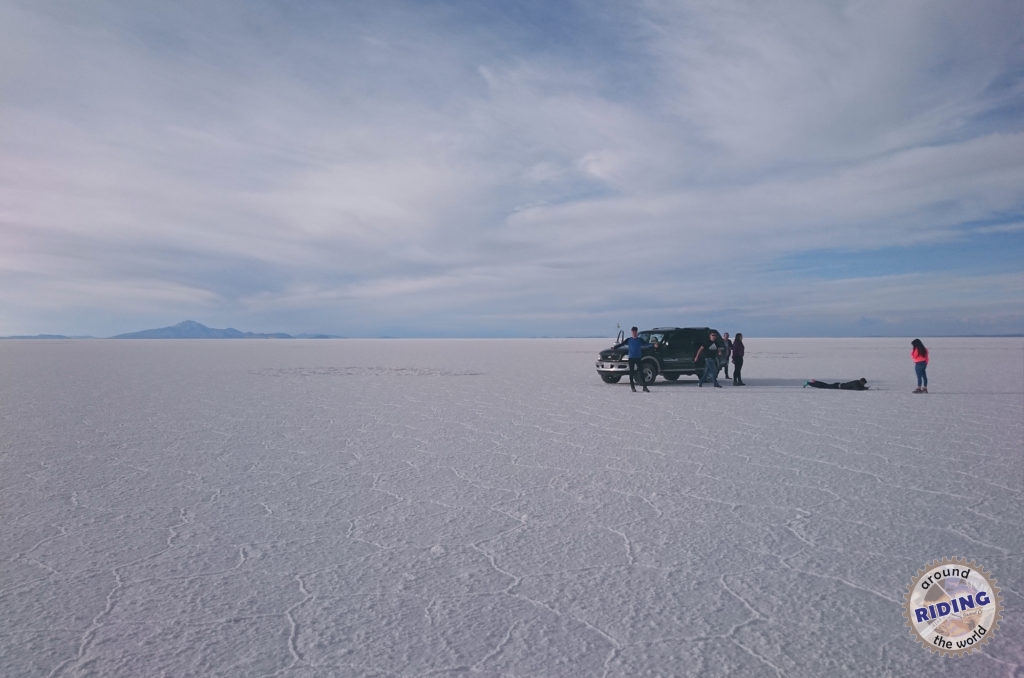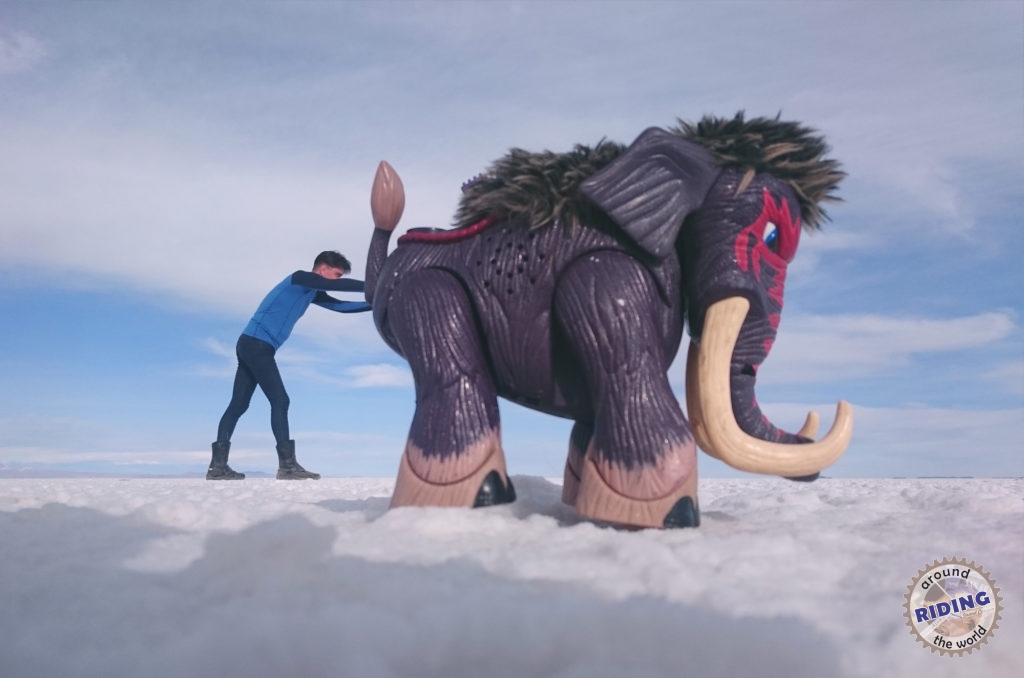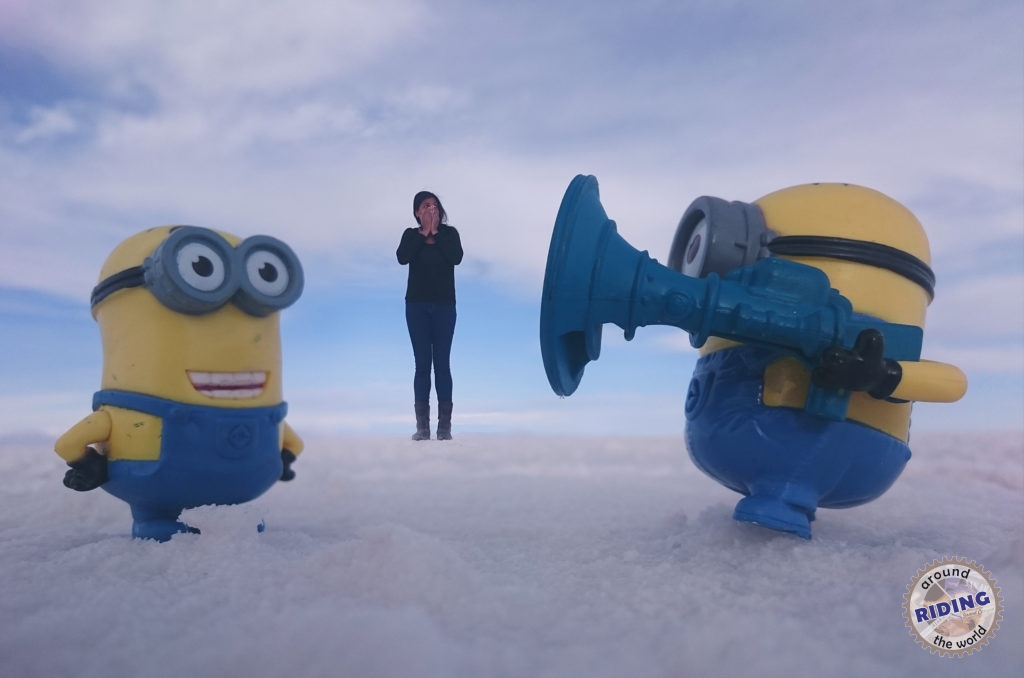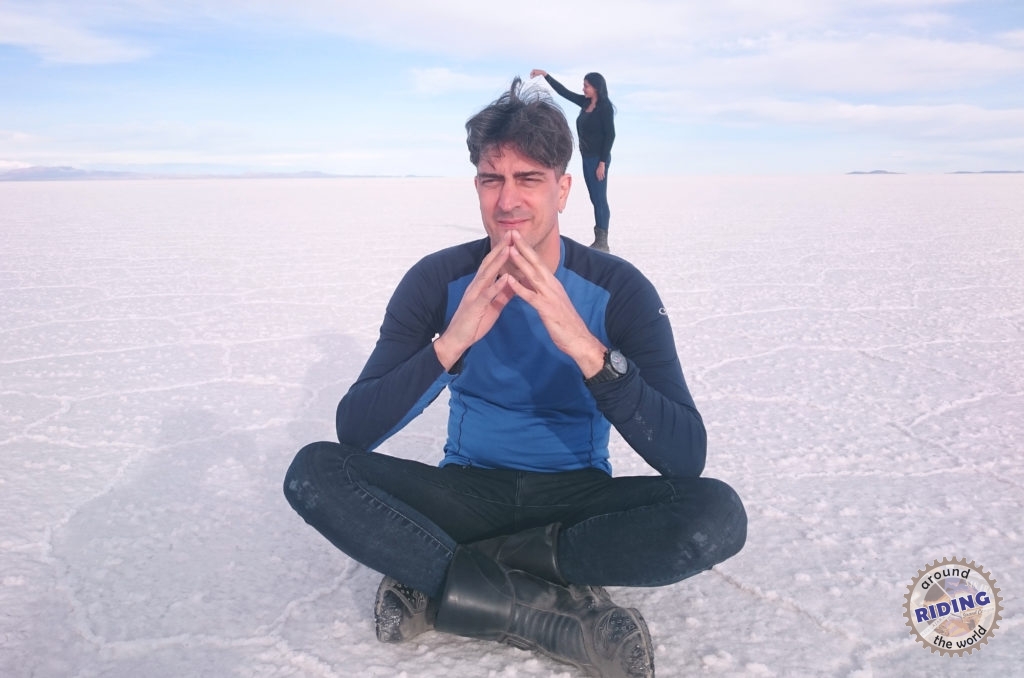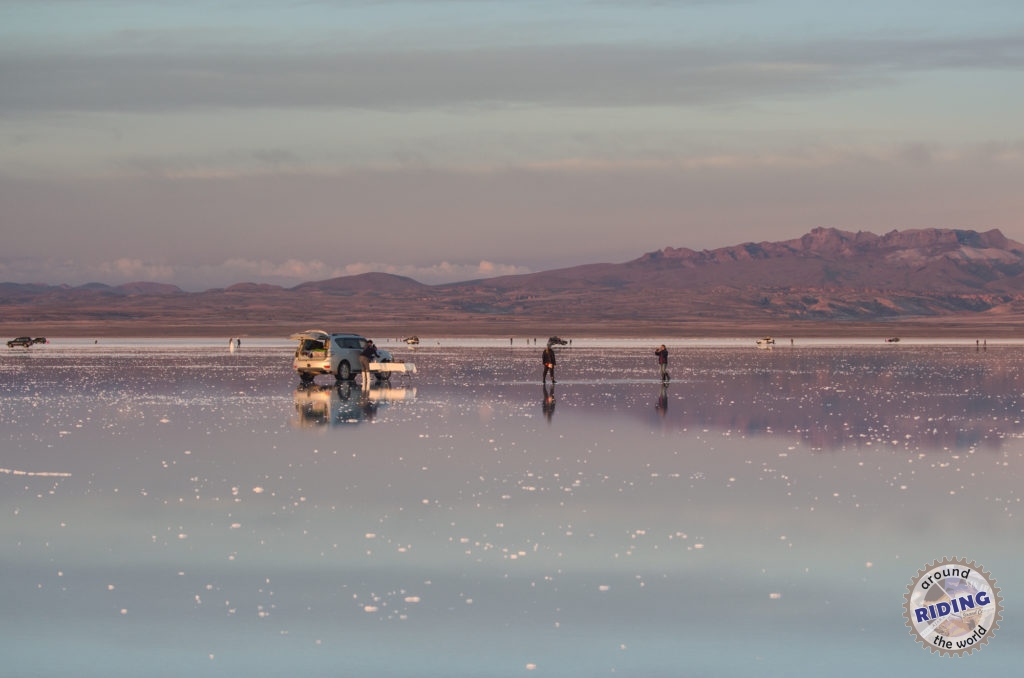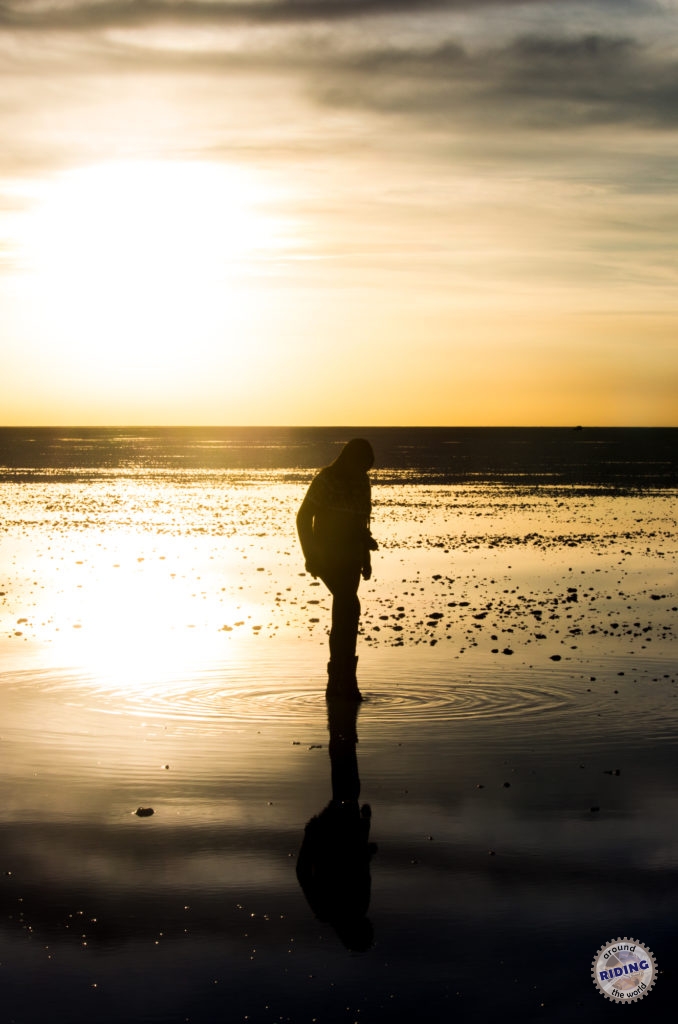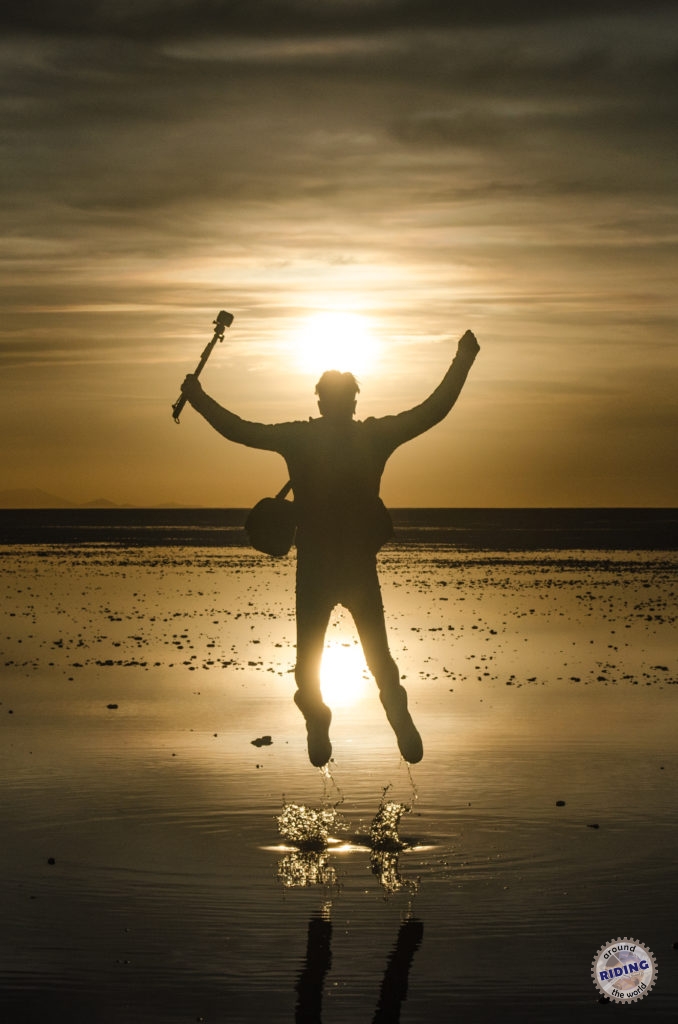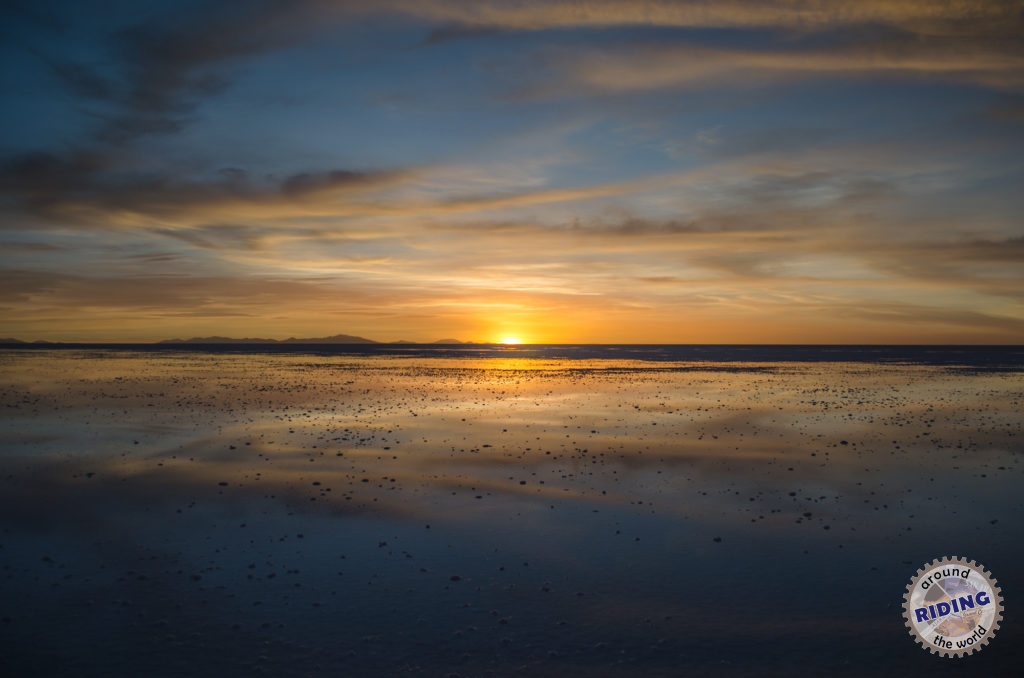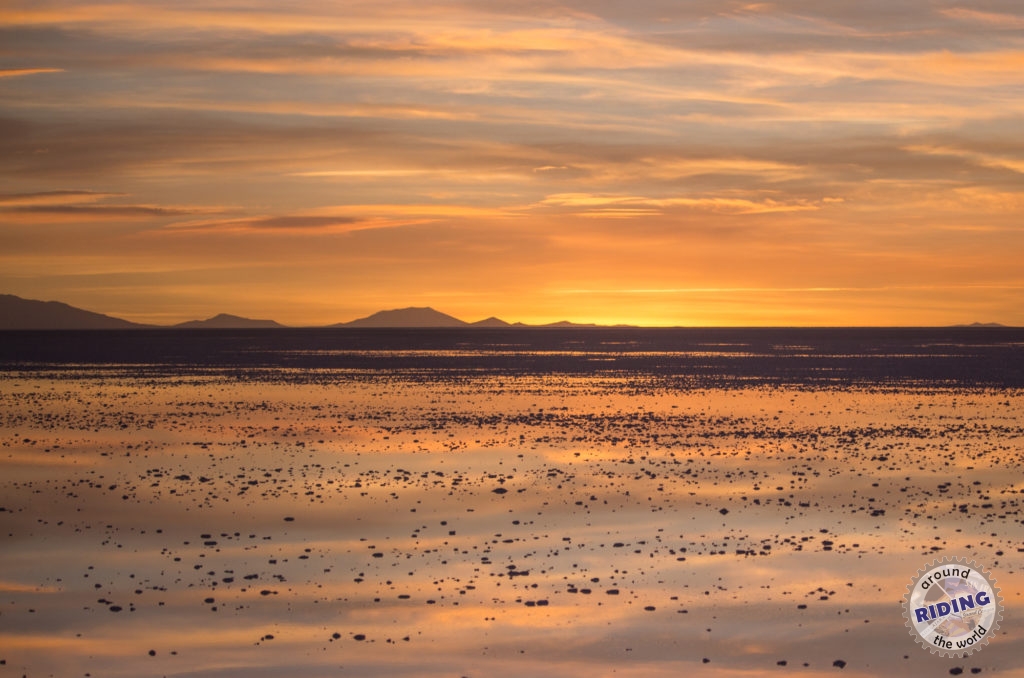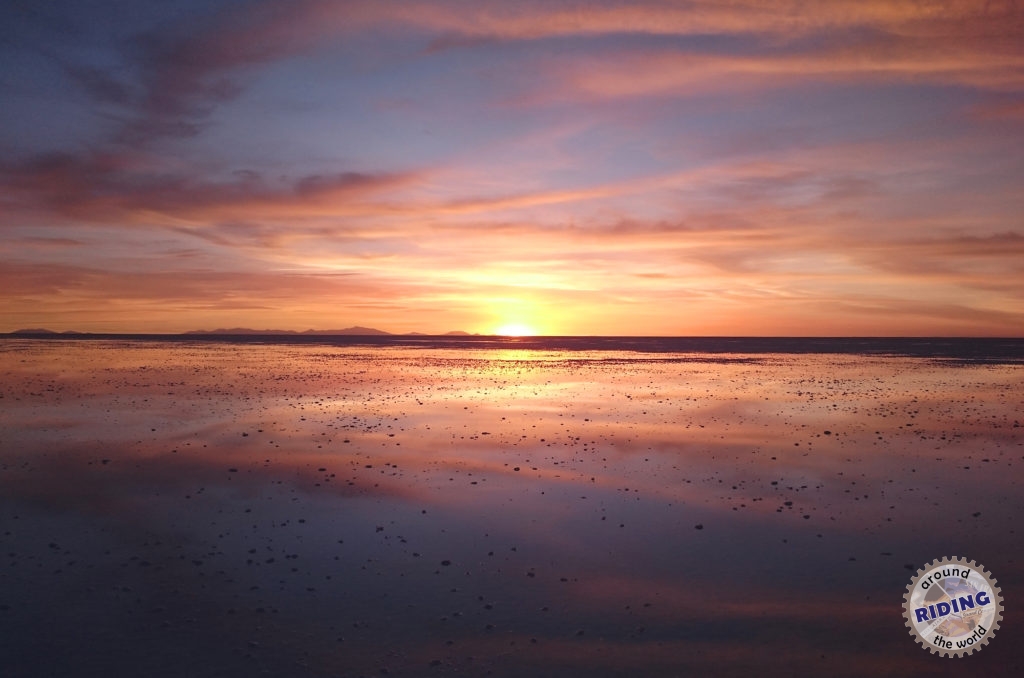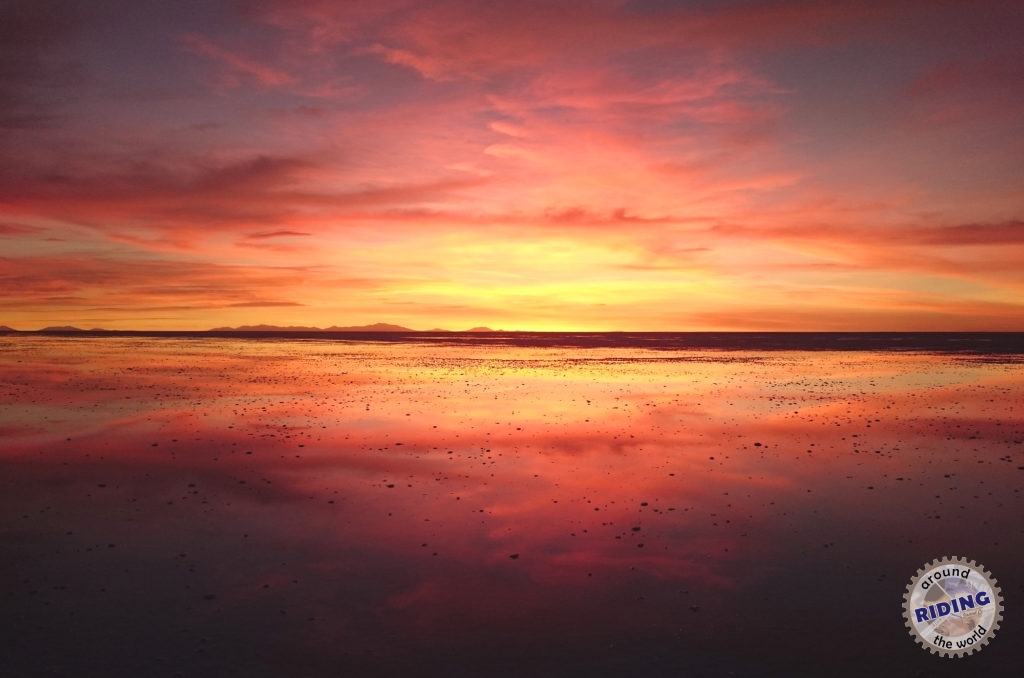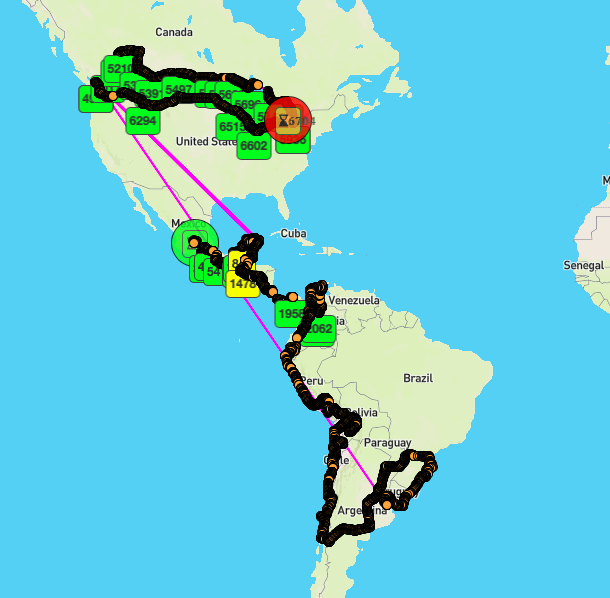We headed to the city of Uyuni for our last weekend in Bolivia as we intended to visit the famous salt flat nearby. Despite being the most touristy city in Bolivia, Uyuni was far from impressive. It was just as filthy as the rest of the country (Bolivia is keeping up with Peru in the garbage department) and the improved road infrastructure we had travelled through to reach there had not made its way into the city. Some parts were paved, some were dirt, and all were covered in sand. Not the best conditions for those on two wheels.
But we didn’t let the city dampen our enthusiasm for the Salar de Uyuni, the world’s largest salt flat at at 10,582 square kilometers. We had planned to go with a tour company on the following day, but since we had arrived at a decent hour in the afternoon, we decided to take a peek near the entrance. The salt flat was a short ride from the city, but it was more bumpy than expected. We didn’t go very far inside, took a few fun shots, and then returned. Even though we didn’t spend much time there or visit the wetter areas, we were sure to get the salt washed off the bike right afterwards.
Walk around the city center of Uyuni and you will come across an overwhelming number of tour companies offering tours to the salt flat. Most people do the multi-day tours that are usually three or four days long and typically offer the chance to enter Chile at the end. Perhaps it is a side effect of long-term travel, but spending so much time in one area did not appeal to us so we opted for a one-day tour and that was perfect for us.
We had done our research ahead of time and booked our tour on the afternoon we arrived for the following day. We chose to go with Skyline Traveller Uyuni because they ranked well on all the scales we were concerned about, including safety, and we were very happy with them. The tour cost us 180 BOB (~34 CAD) per person and commenced at 11:00 AM, starting with a visit to the train cemetery. In the past, Uyuni had served as a distribution hub for trains carrying minerals towards the Pacific Ocean ports. These trains were used by mining companies and after the collapse of the mining industry in the 1940s, the trains were abandoned here, forming the train cemetery.
After we all had our fill of monkeying around at the train cemetery, we had a lunch break of a simple, but delicious and hearty meal that was included in our tour. The lunch area is located close to the monument of the Dakar rally in Bolivia so we checked it out while we still had time. And yes, it is made entirely of salt. Nothing low-sodium for the day.
The next stop was Isla Incahuasi, a hilly, rocky, and cactus-covered outcrop of land in the middle of the salt flat that used to be an island. For those who are unfamiliar with how the salt flat was formed, it is the result of transformations between several lakes over time that are now covered by a few meters of salt crust. The entry for the island was not included in the tour, but was relatively cheap at 30 BOB (~6 CAD) per person.
The altitude made the climb require some effort, but it was worth getting to the top to enjoy some spectacular views of the otherworldly vastness of the salty landscape.
Next up was the moment we all had been waiting for – the perspective photo shoot. Our driver, Alejandro, was a terrific guide because not only was he a careful driver and full of interesting facts about the places he took us to, he brought props and helped everyone in the group take numerous fun shots. Because SLR cameras have the tendency to focus on one object and blur the out-of-focus areas of an image, cell phone cameras were the way to go (although mine wants to be an SLR when it grows up and tends to blur areas out at times). We got some cool pictures and had a lot of fun doing it.
As the age-old saying goes “save the best for last,” the best part of our already-terrific day was yet to come. The last stop was at the watery area of the salt flat where we got to take the cool, Insta-worthy reflective shots and enjoy the most beautiful sunset imaginable. The sun going down over the reflective surface was a breathtaking sight, but it is after the sun disappeared behind the surface that the rich hues of the sky came out in all their stunning glory. If only every day could end with a sunset view like this.
It was a long day, but what an unforgettable one! The Salar de Uyuni was something we were already excited about visiting; however, we had underestimated how stunning it truly is. We couldn’t be happier with our decision to go with a tour instead of the bike. All that salt, especially in the watery area, would have been disastrous and we would have had to get it washed right afterwards. We also would have missed the sunset because there was no way that we would have attempted to navigate the uneven surface and tried to find our way back in the dark. Needless to say, if you are thinking about taking your own vehicle there, we strongly recommend against it and opting for a tour.
A few additional things to note for anyone thinking about visiting the salt flat:
- Take extra layers because even if you visit during the warmer season, it gets very cold as soon as the sun starts to go down
- Wear waterproof shoes for the reflective area as the water level can be a few centimeters, even during the dry season
- Take advantage of the washrooms at the lunch area and at the Isla Incahuasi (accessible only with the entry ticket) because you will not get another chance until the tour is over and you are taken back into town
- The tour and ticket for the island are payable in cash so be sure to bring enough
After Uyuni, we returned to Oruro for another night before crossing the border into Chile. Like Peru, there were a number of things we did not enjoy so much about Bolivia, such as the filth and the bad drivers. However, the worst thing was getting gas in this country as a foreigner because not only were the prices much higher (local rate was 3.74 BOB/L and foreign rate was 8.68 BOB/L), the octane number was not given anywhere so we never knew what kind of gas we were getting. However, from the way the bike coughed and wheezed like a bronchitic octogenarian upon startup, I’m guessing it was bad gas.
Also, a number of places turned us away as they did not have the system to process transactions for foreigners. Needless to say, this was very frustrating. We recommend fellow foreigners in Bolivia to look for the YPFB logo at gas stations as these ones are subsidized by the government and can handle these transactions.
Despite the annoyances, the positives outweighed the negatives for us in this country and we truly enjoyed our time here. The salt flat and watching the sunset there was definitely the highlight and should not be missed by anyone in or near the area.
